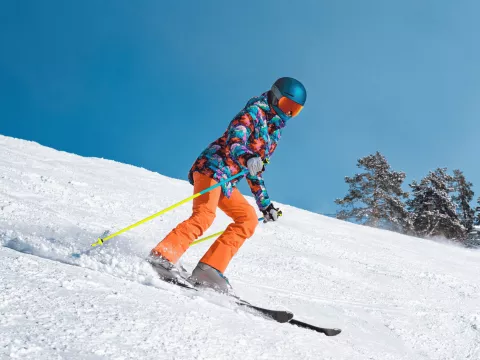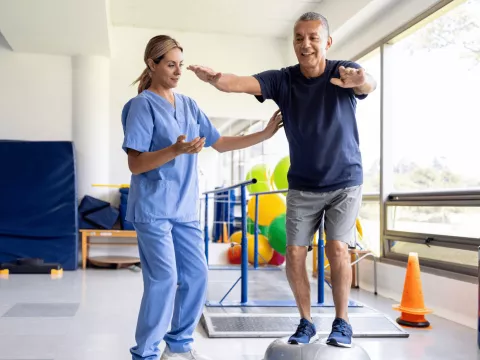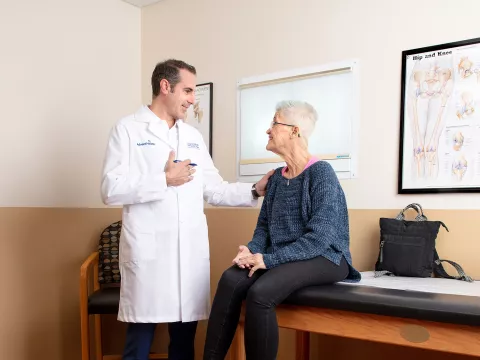- AdventHealth

It’s estimated that over half a million people are injured each year as a result of skiing and snowboarding accidents. Jason Jennings, MD, DPT, an orthopedic surgeon at AdventHealth Medical Group Colorado Joint Replacement at Porter, shares his top tips to help you stay injury-free and enjoy winter sports all season.
Common Skiing and Snowboarding Injuries
Winter sports can lead to serious injuries, so taking precautions while skiing and snowboarding is especially important. “With snowboarding, for instance, most people fall directly on their hands, so wrist injuries are very common,” shares Dr. Jennings. And when it comes to skiing, Dr. Jennings says skiers are at a high risk for ACL tears of the knee.
Keeping Your Bones and Joints Healthy
Thankfully, there are a few simple steps you can take to reduce your risk of injury this winter while you’re outdoors skiing or snowboarding:
- Sign Up for a Lesson
“First and foremost, if you’re a novice and don’t know how to ski and snowboard, taking a lesson is wise,” suggests Dr. Jennings. Many ski schools offer classes for all ages and skill levels, so whether you’re brand new to the slopes or looking for a quick refresher course to start the season on the right foot, there’s an option for you.
- Stay Consistent
While they may seem like fun, casual activities, even basic skiing and snowboarding require a certain level of endurance and physical fitness. The best way to prepare your body for snow sports season is to stay physically active all year long. “Consistency is the key,” explains Dr. Jennings. “Year-round training is very smart — upper extremity strengthening, lower extremity strengthening and cardiovascular fitness is what we recommend to our patients.” Maintaining a regular exercise routine throughout the year minimizes your risk of injury and can help soothe aching joints.
- Wear the Right Protective Gear
The best way to minimize potential injuries on the slopes is to use the proper protective gear. “Head injuries are uncommon in skiing and snowboarding, but when they happen, they can be quite devastating,” says Dr. Jennings. Helmets help minimize the impact on your head during a fall.
He continues, “Additionally, wrist guards have been shown to decrease the risk of wrist injuries in snowboarding. If you have a history of injuries, it’s wise to wear protective gear on any joints you’ve previously injured as well.”
When to Seek Medical Attention
When injuries do happen, it’s important to know your next steps. “If you’re on the slopes and can’t move your arm or your leg after a fall, that’s a red flag that you should seek medical attention,” explains Dr. Jennings. “As a general rule, if your pain isn’t getting any better after a few days, it’s probably a good time to visit an orthopedic surgeon and get a second evaluation.
We’re Here to Help Soothe Your Joints
We’re dedicated to helping you get back to the active life you love. Speak with one of our orthopedic experts today to learn more about our comprehensive, personalized approach to joint care.
Recent News

Patient Testimonial: Getting Back to an Active Life After Knee Replacement Surgery
For many people, the decision to undergo joint replacement surgery is not an easy one. It can take years of indecision, doubt and unnecessary pain before someone finally decides to go ahead with their...

Things to Know When Considering Joint Replacement
Orthopedic surgery can be a life-changing decision for those who experience limited mobility due to painful, achy joints and bones.
